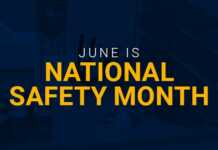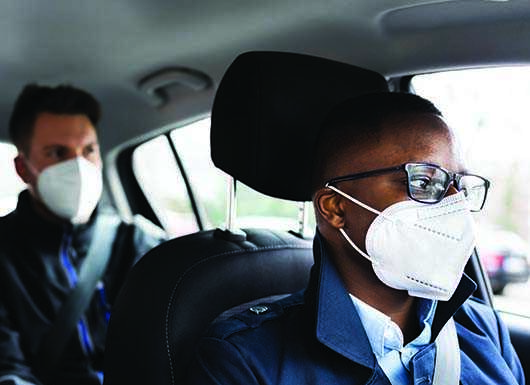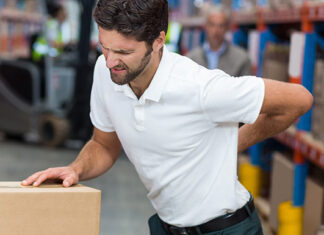Workers across all industries have had their world flipped upside down by the COVID-19 pandemic. A common obstacle employers face is transporting groups of employees safely while still following safety controls.
Developing and implementing protocols that address protection for group transportation can have far-reaching effects on employees and their families. Let’s discuss what to do before, during, and after being in a vehicle.
Before Entering the Vehicle
One way to assist in protecting employee health is to properly evaluate the means of transportation. This could mean construction workers entering a work truck or employees from a specific area carpooling to the job.
Reviewing controls with employees and ensuring precautions are followed is vital to preventing the spread of germs. This should be done before the employees enter a vehicle. As stated in ICW Group’s Infectious Disease Preparedness & Response Plan created to help you return your workers to the workplace safely, here are several steps and protocols to take:
Transportation Assessments
Transportation Assessments should be prioritized in the following order:
- Employees in the vehicle are separated by at least three feet in all directions during the operation of the vehicle, regardless of the vehicle’s normal capacity. This could lead to additional vehicles or trips for employees.
- Employees are provided face coverings in the vehicle.
- Driver should conduct temperature checks.
- Employees self-attest that they have no COVID-19 symptoms and are fever-free before entering the vehicle; employees with symptoms will be excluded from riding in the vehicle.
Cleaning and disinfecting
- High-contact surfaces (door handles, seatbelt buckles, armrests, etc.) will be cleaned and disinfected before entering the vehicle.
- A copy of the cleaning and disinfecting log should be maintained in each vehicle to track cleaning.
- Disinfectant, hand sanitizer, and cleaning supplies are provided and stored in each vehicle. A best practice could be to create a “sanitation kit” with an inventory log to ensure the vehicles are stocked with supplies.
While in the Vehicle
In transit, it is equally as important to make sure employees are following the controls in place. The risk can depend on how many employees are riding in the vehicle, spacing available in the vehicle, and many other factors, such as whether you’re making additional stops. Below are several steps and protocols you can take:
- Employers shall ensure proper ventilation in the vehicle, including making sure windows are kept open and the ventilation system is set to maximize outdoor air and not set to recirculate air.
- Windows don’t have to be kept open if one or more of the following conditions exist:
- The vehicle has functioning air conditioning in use and the outside temperature is greater than 90 degrees Fahrenheit.
- The vehicle has functioning heating in use and the outside temperature is less than 60 degrees Fahrenheit.
- Protection is needed from weather conditions, such as rain or snow.
- Employees are required to wear a face covering in the vehicle at all times.
- Employees handle their personal items.
- Avoid unnecessary contact with surfaces frequently touched, such as the door frame and handles, windows and other vehicle parts.
After Being in the Vehicle:
Establishing a cleaning routine after vehicle use can help create a sense of accountability and prevent another group of employees from using an unclean vehicle. Maintaining a good sanitation standard is good for the welfare of the employees and business continuity purposes.
Below are several controls that one can use post trip:
- Disinfect high-contact surfaces (door handles, seatbelt buckles, armrests, etc.) used by employees.
- Consider using alcohol wipes and/or hand sanitizer to disinfect hands. It is also recommended to wash hands with soap and water for at least 20 seconds as soon as possible.
- If possible, leave the vehicle windows down so it can air out.
Key Take Aways
Before getting into the vehicle, have the appropriate controls and ensure precautions are followed.
During transportation, create accountability between employees so they can be more receptive to protocols.
After being in the vehicle, implement sanitizing efforts so the vehicle will be safe for future use.
For additional COVID-19 resources, visit ICW Group’s Policyholder Center.

















